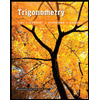Two guy wires are attached to utility poles that are 40 ft apart and joined at the same point on the ground, as shown in the following figure: 30 ft 20 ft We will call the lengths of the two guy wires h1 and h2, respectively. Further, notice that the distance along the ground is 40 ft and is broken up into two segments: x and y (x is already labeled on the picture; y is the other segment along the ground). For this problem, we will assume that x = 30 ft. Blank 1: Find the value of y. Blank 2: Find the value, rounded to the nearest tenth of a foot, of h1 + h2.
Addition Rule of Probability
It simply refers to the likelihood of an event taking place whenever the occurrence of an event is uncertain. The probability of a single event can be calculated by dividing the number of successful trials of that event by the total number of trials.
Expected Value
When a large number of trials are performed for any random variable ‘X’, the predicted result is most likely the mean of all the outcomes for the random variable and it is known as expected value also known as expectation. The expected value, also known as the expectation, is denoted by: E(X).
Probability Distributions
Understanding probability is necessary to know the probability distributions. In statistics, probability is how the uncertainty of an event is measured. This event can be anything. The most common examples include tossing a coin, rolling a die, or choosing a card. Each of these events has multiple possibilities. Every such possibility is measured with the help of probability. To be more precise, the probability is used for calculating the occurrence of events that may or may not happen. Probability does not give sure results. Unless the probability of any event is 1, the different outcomes may or may not happen in real life, regardless of how less or how more their probability is.
Basic Probability
The simple definition of probability it is a chance of the occurrence of an event. It is defined in numerical form and the probability value is between 0 to 1. The probability value 0 indicates that there is no chance of that event occurring and the probability value 1 indicates that the event will occur. Sum of the probability value must be 1. The probability value is never a negative number. If it happens, then recheck the calculation.
Question attached below

The diagram shows two utility poles of different heights, 20 ft and 30 ft, each with a guy wire attached and meeting at a point on the ground. The distance between the two poles along the ground is 40 ft.
#### Definitions and Variables
The lengths of the two guy wires are denoted as \( h_1 \) and \( h_2 \), respectively. The ground distance of 40 ft is divided into two segments: \( x \) and \( y \).
- \( x \): Distance along the ground between one of the utility poles and the point where the guy wires meet (given as 30 ft).
- \( y \): The remaining distance along the ground between the other utility pole and the point where the guy wires meet.
- \( h_1, h_2 \): Lengths of the guy wires.
#### Given
- Distance between poles: 40 ft
- \( x \) is given as 30 ft
#### Problems to Solve
**Blank 1:** Find the value of \( y \).
**Blank 2:** Find the value, rounded to the nearest tenth of a foot, of \( h_1 + h_2 \).
#### Solution Approach
Using the Pythagorean Theorem, the lengths of the guy wires \( h_1 \) and \( h_2 \) can be determined:
\[ h_1 = \sqrt{(20)^2 + (30)^2} \]
\[ h_2 = \sqrt{(30)^2 + (10)^2} \]
where:
- \( h_1 \) is the hypotenuse formed by the 20 ft pole and 30 ft ground segment.
- \( h_2 \) is the hypotenuse formed by the 30 ft pole and the remaining 10 ft ground segment \( y \), as the total horizontal distance must equal the given 40 ft.
By solving these, \( h_1 \) and \( h_2 \) can be added together to find \( h_1 + h_2 \).
This problem offers a practical application of the](/v2/_next/image?url=https%3A%2F%2Fcontent.bartleby.com%2Fqna-images%2Fquestion%2Fd24861ef-92b0-4cd8-8c54-2ac2200498ec%2Ff932d7ca-20cf-4bc8-9249-471369396591%2Fyl28lg5_processed.jpeg&w=3840&q=75)
Step by step
Solved in 2 steps with 2 images







